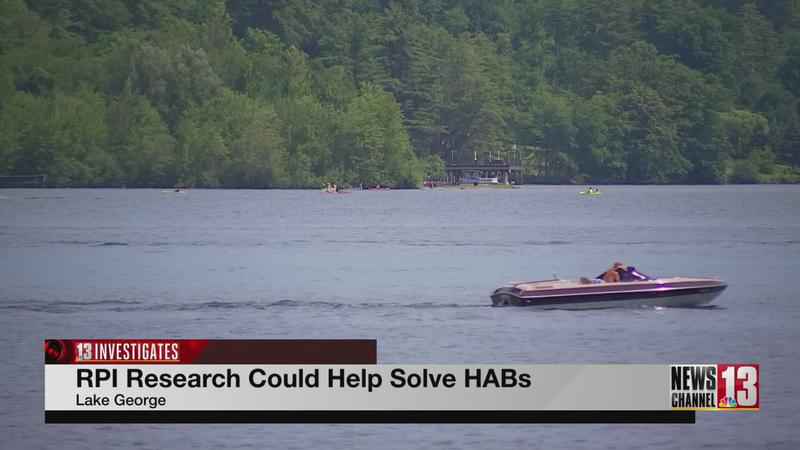Harmful algal blooms threaten Lake George
LAKE GEORGE – It’s called the "Queen of American Lakes." Lake George sits upon the throne of waterbody royalty because of its cleanliness.
Legendary clarity draws visitors and praise from all over the world.
When no less than Thomas Jefferson first set his gaze upon the lake, this was his reaction:
"Lake George is without comparison, the most beautiful water I ever saw; formed by a contour of mountains into a basin…finely interspersed with islands, its water limpid as crystal…"
Now 230 years later, it’s never been more popular to homeowners, boaters, tourists, fishermen – both ice and freshwater. However, there’s a looming threat that has the potential to upset all that. It’s called a harmful algal bloom and it was discovered by a member of the Lake George Association.

Harmful algal blooms threaten Lake George
[anvplayer video=”5007656″ station=”998132″]
HABs as they’re called, are a wide swath of algae, a massive amount of algae growing in one area, and they can be toxic, hurting liver and skin.
The first harmful algal bloom was first discovered November 7 in Harris Bay. It dissipated that same day. However, the fear is long lasting. Fear that those discovered in Harris Bay and elsewhere weren’t one-off events.
Preventing harmful algal blooms
[anvplayer video=”5007723″ station=”998132″]
Scientists believe HABs are caused by a disturbance in the balance, likely the introduction of nutrients such as nitrogen and phosphorus from fertilizer, or leaking septic systems, they just aren’t sure.
However, they are certain the impact on the lake and its economy can’t be overstated. They’ve seen it happen to other lakes.
Find out how a team of world-class researchers and environmentalists has made preventing HABs on Lake George its top priority by watching the video of Mark Mulholland’s story.
RPI research could help solve harmful algal bloom
[anvplayer video=”5007763″ station=”998132″]